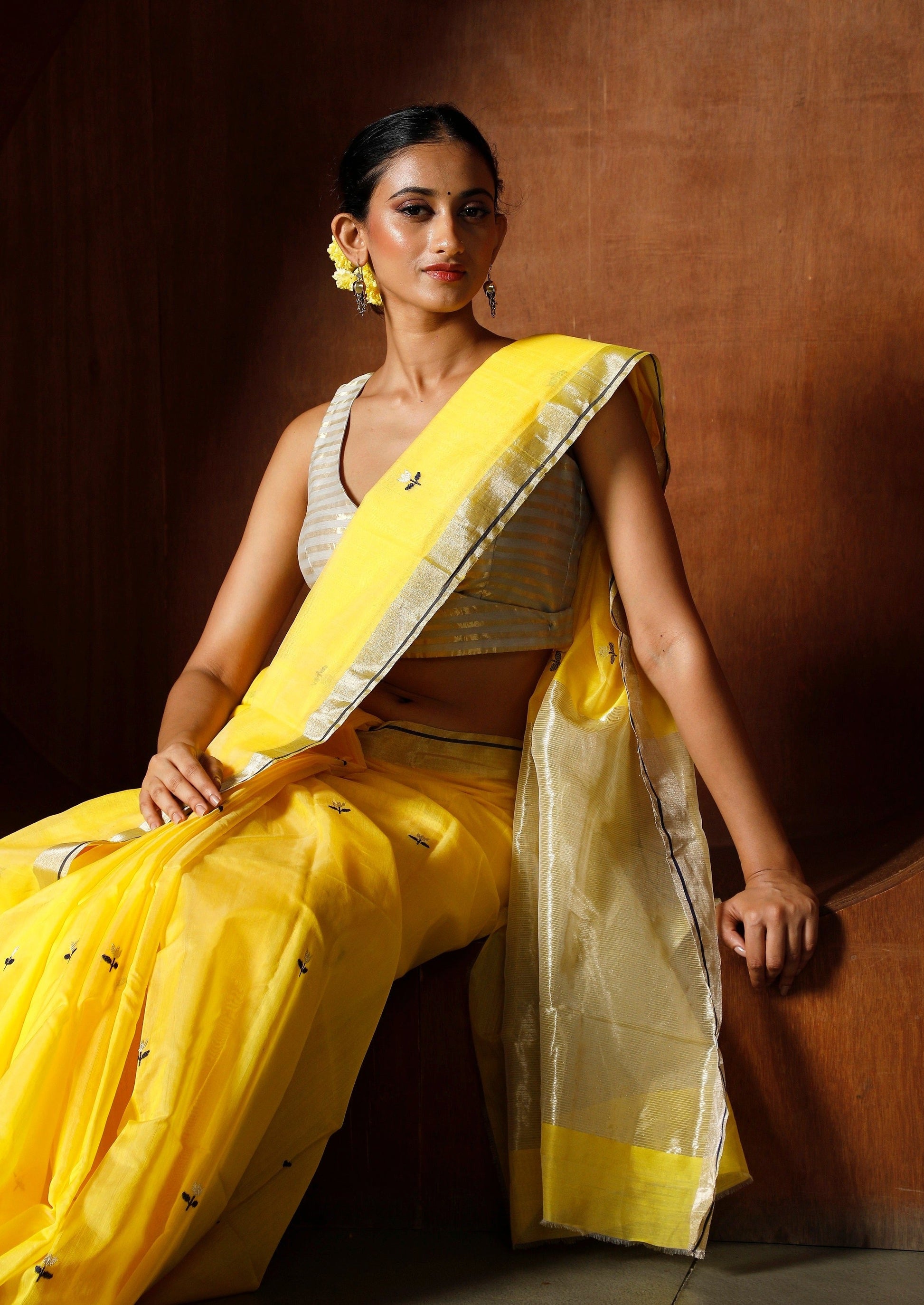
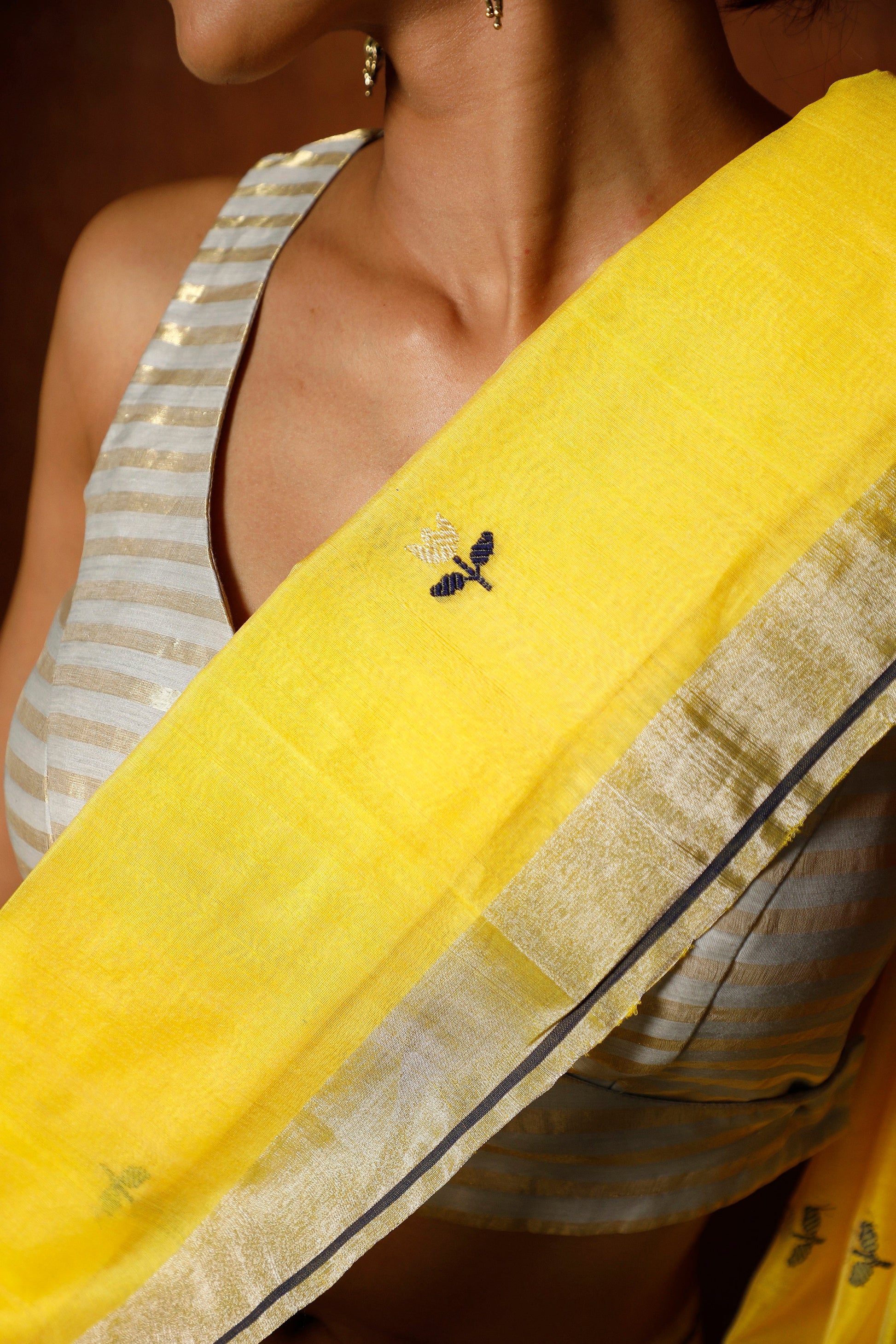
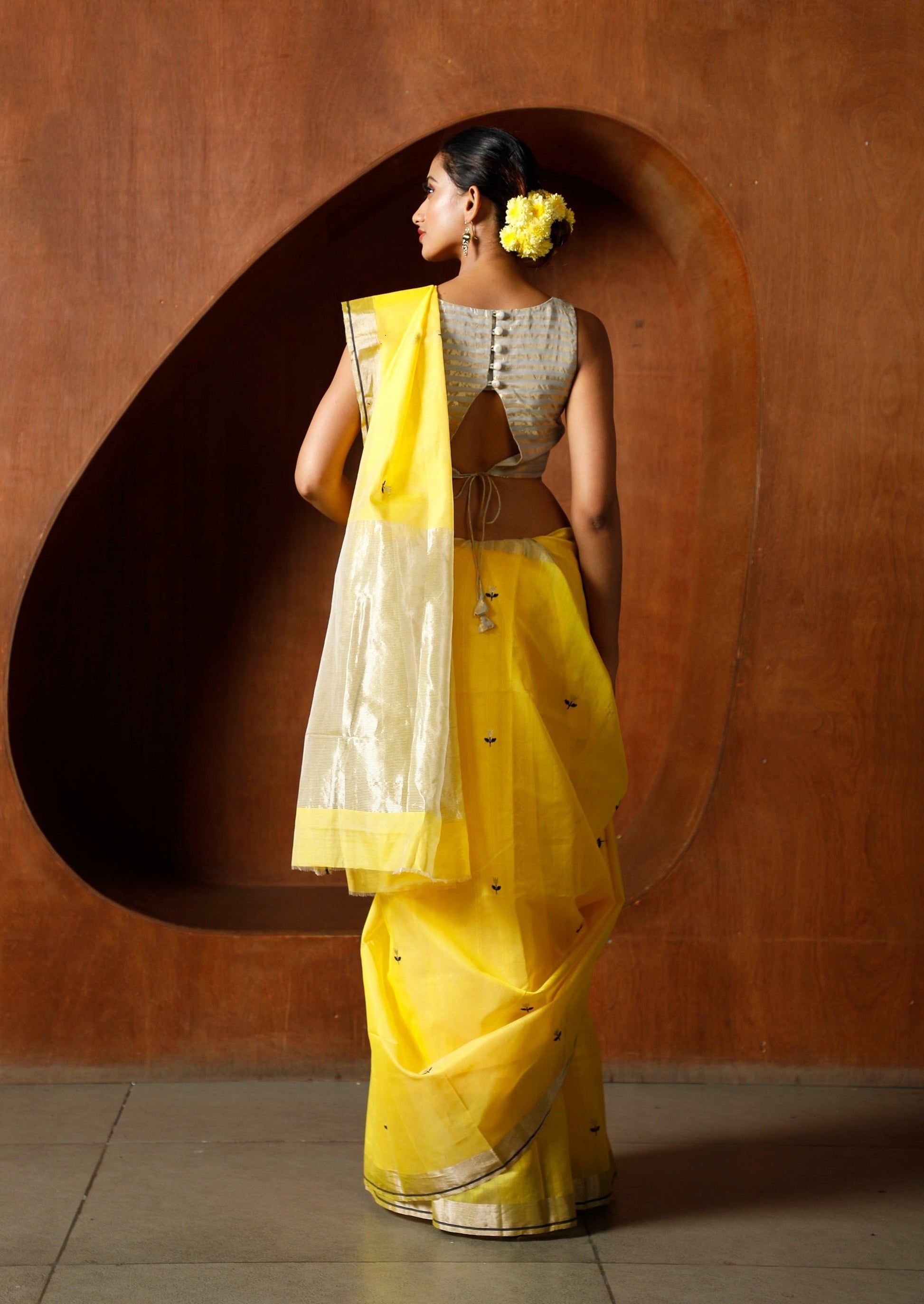
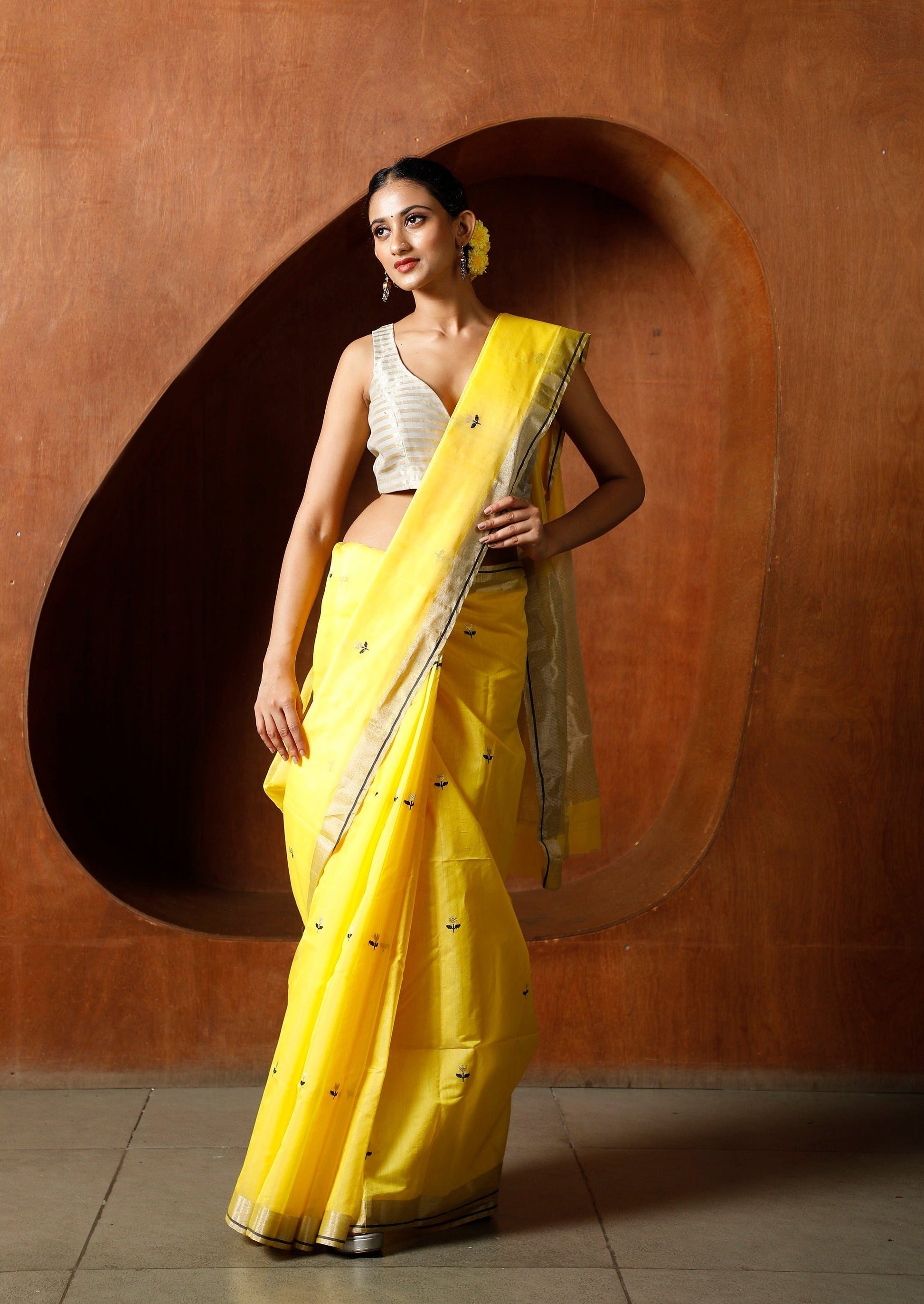
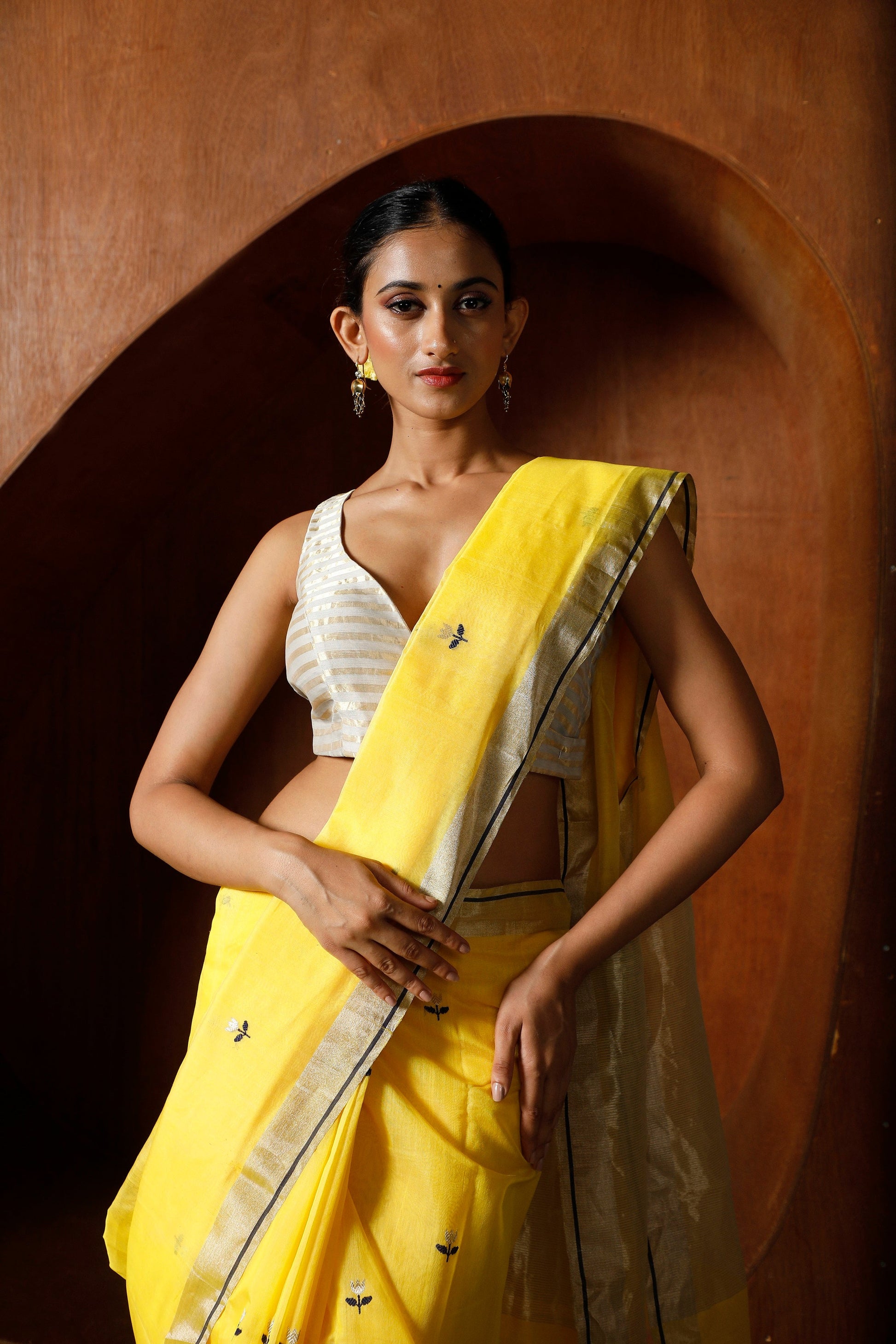
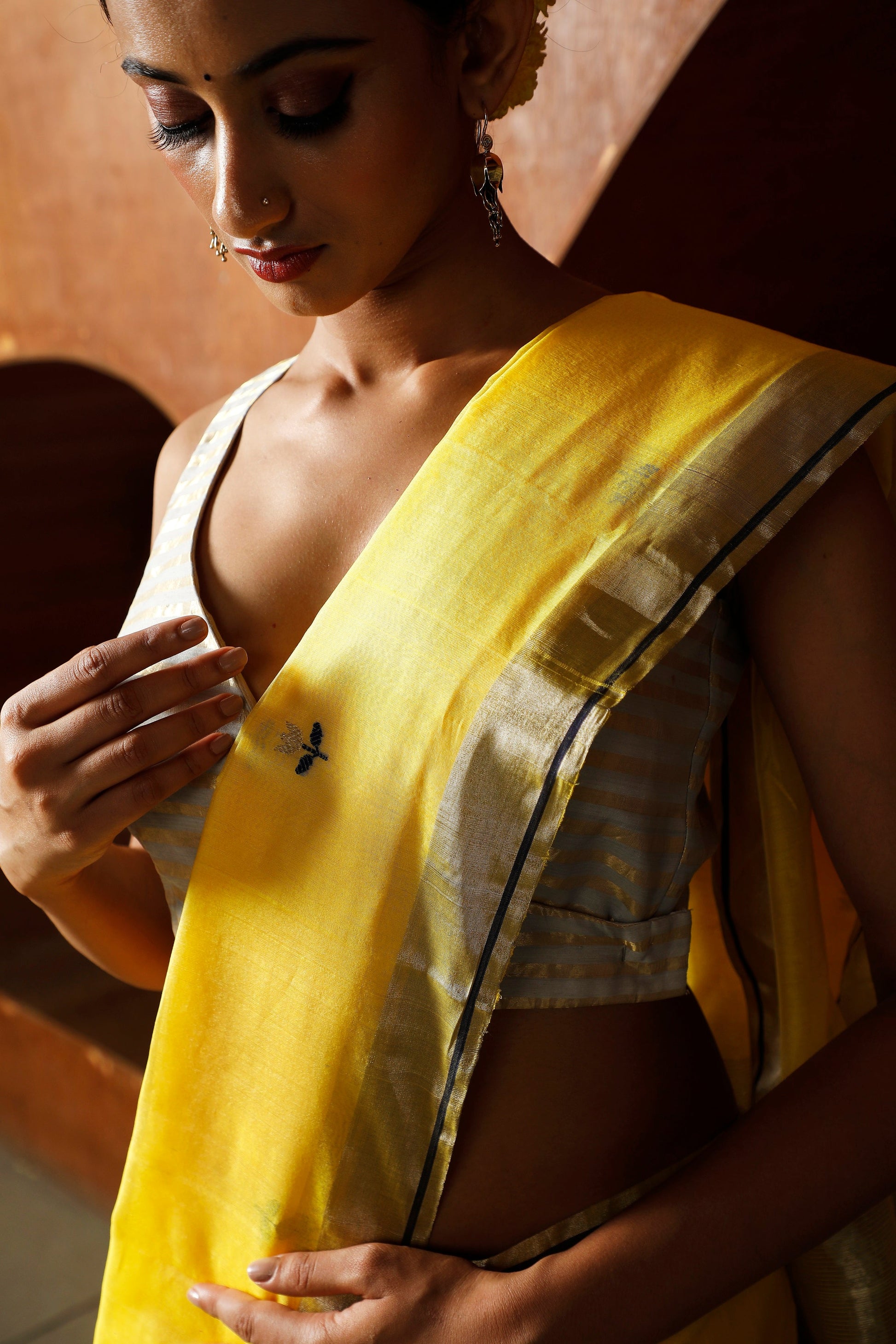
Handwoven Yellow Chanderi Silk Cotton Saree With Tulips

Handwoven Yellow Chanderi Silk Cotton Saree With Tulips
Behind The Weave
Dyeing
Before the weaving of any saree, the cotton yarns are dyed into desired colours. It is the process by which the natural silk yarns or cotton yarns are separated from the bundle and dipped into a soap solution. Then, the required dye is mixed into this solution and the yarns are further dipped to absorb the colour. After some time, the yarns are taken out and, with a rod, the excess of water is squeezed out from the dyed yarn. These dyed yarns are kept under the sun to dry.
Combing Of Threads
The dyed and dried yarn is combed and separated by hand, spread across two poles. This helps the yarn retain its colour and also, allows the weaver to apply starch to the threads, making them crisp and ready - for winding the bobbins.
Winding & Warping
Winding is the process of transferring yarn or thread from one type of package to another. It is one of the most important operations and involves the transfer of yarn from a ring bobbin or hank into a convenient form of package containing a considerable long length of yarn.
Warping is the stage after winding. The process involves transferring yarn from a predetermined number of tubes, cones or cheeses positioned on the creel onto a warper's beam or a weaver's beam.
Weaving
Weaving is the interlacing of two distinct yarns/threads at right angles to create the fabric/textile. The manipulation of the foot pedals to lift the warp has to be in sync with the throwing of the shuttle which carries the weft yarn. A perfect weave demands coordination between mind and body.
Discover more in our FAQ
Endé handloom sarees embody a blend of traditional craftsmanship and contemporary design. Each piece is a work of art, reflecting the dedication of skilled artisans and celebrating the inherent beauty of handcrafted textiles.
Recently Viewed Products











